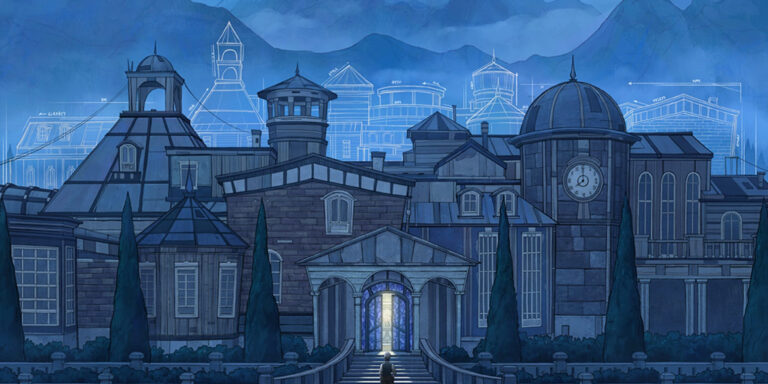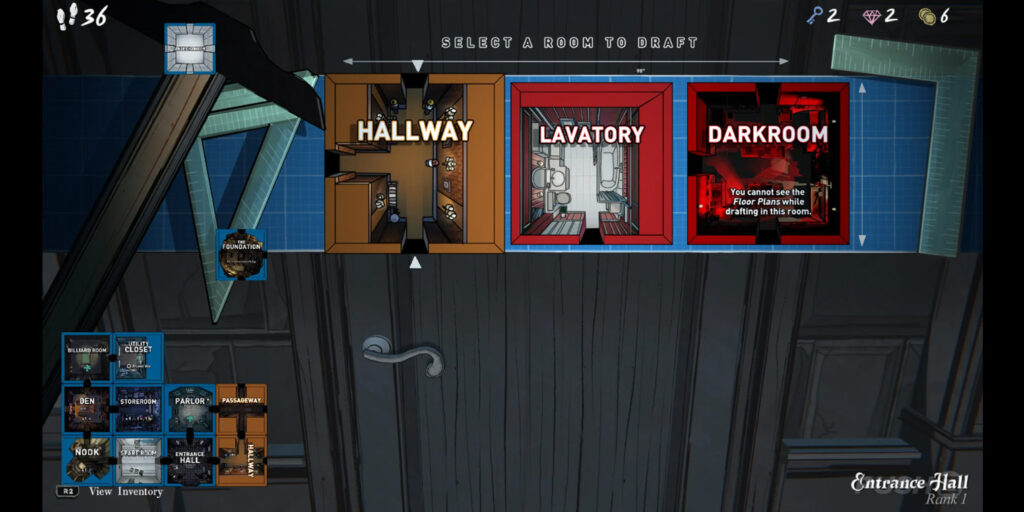OPINION: Blue Prince is a Game That Encourages Obsession


Blue Prince is the debut title from Dogubomb, a studio comprised of film and game industry veteran Tonda Ros, who’s worked on projects for the likes of Netflix, Magic The Gathering and Sony. As a company that has worked on commercials, it’s not surprising that Dogubomb’s first game would be one built on artifice.
Blue Prince has two main selling points: you build the level (a sprawling mansion) as you explore, and every single thing you see is part of a larger puzzle. Or could be. It’s maddening.
“I’ve been crafting this puzzle box of a Manor for the last eight years,” Ros said in an official trailer for the game. “It’s five rooms wide, nine rooms deep. A house of 45 rooms. Can you find room 46?”
An early room actively encourages players to make a journal, which I initially thought was just a gimmick, until it very quickly became apparent that every single room has some blatantly weird things in it that clearly serve some other purpose, from handdrawn pictures to large chess pieces.
Or do they? This is where the artifice comes in. As Simon, a young boy tasked with uncovering room 46, players can walk or run around, but they’re incapable of moving over a small curb or climbing over a knee-high fence, because the game wants you to figure out the padlock combination on the gate for the fence.
The grounds of the manor can be explored to an extent, but apparent entrances can’t be explored until players figure out how the game wants you to do it. For example, players have a campsite on the grounds, but they can’t use the cozy campfire in any way with some nearby torches in a dark corridor because that’s not the puzzle.
Everything’s a Question
Blue Prince teaches you that every single thing is a question in need of an answer even if, like the campfire/torches situation, or the tiny locked gate, it doesn’t make sense why the obvious answer isn’t viable.
The developers are telling us that we can’t move things they don’t want us to move, that we have to figure out what the mechanics are and play the game according to those mechanics, not actual logic.
On the one hand, a game that abandons normal logic and demands physical notetaking is a pretty bold move, but on the other it does condense actual gameplay down into: click a door, choose a room, put down your controller, make a note of everything in the room, click a door, choose a room, and so on.
There’s resource management in terms of only being able to take a certain number of “steps” (which decreases every time you enter a room, not when you actually move) and some rooms are reliant on items, like gems, to draft.

Players can also collect coins and buy items from Commissary rooms, even though there are no other people around so really, why can’t you just take what you want? A security room is littered with VHS tapes and has a VCR, but you can’t use them. You can pay for and order food that magically appears in the Dining Room.
Blue Prince is a puzzle game that constantly reminds players it’s a puzzle game. It is intriguing, though, and that is why it’s so maddening. I played it for a couple of hours last night, then woke up this morning wondering what the significance could be of the Drawing Room pictures showing the stride length of its subjects.

It might not mean anything in the end, just as the way the dioramas inside giant fish tanks I saw might not mean anything, or the Den with its multiple clocks, or how very few of the clocks in the house match times with each other may mean anything.
And yet, Blue Prince has me wondering: “But what if it does?” That’s not a healthy thing to instill in players, unless the intention is to turn them into Jim Carrey in the film The Number 23.





